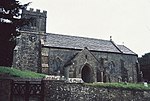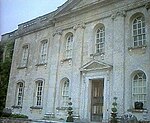The Nine Stones, also known as the Devil's Nine Stones, the Nine Ladies, or Lady Williams and her Dog, is a stone circle located near to the village of Winterbourne Abbas in the southwestern English county of Dorset. Archaeologists believe that it was likely erected during the Bronze Age.
The Nine Stones is part of a tradition of stone circle construction that spread through much of Great Britain, Ireland, and Brittany between 3,300 and 900 BCE, during the Late Neolithic and Early Bronze Age. The stone circle tradition was accompanied by the construction of timber circles and earthen henges, reflecting a growing emphasis on circular monuments. The purpose of such rings is unknown, although archaeologists speculate that the stones represented supernatural entities for the circle's builders. At least nine of these stone circles are known to have been constructed near modern Dorset. They are smaller than those found elsewhere in Great Britain and are typically built from sarsen stone.
Located in the bottom of a narrow valley, the Nine Stones circle has a diameter of 9.1 by 7.8 metres (29 feet 10 inches by 25 feet 7 inches). It consists of nine irregularly spaced sarsen megaliths, with a small opening on its northern side. Two of the stones on the northwestern side of the monument are considerably larger than the other seven. This architectural feature has parallels with various stone circles in southwestern Scotland, and was potentially a deliberate choice of the circle's builders, to whom it may have had symbolic meaning.
Antiquarians like John Aubrey and William Stukeley first took an interest in the site during the eighteenth century. It later received archaeological attention, although it has not been excavated. Local folklore has grown up around the circle, associating it with the Devil and with children petrified into rock. The Nine Stones are regarded as a sacred site by local Druids, who perform religious ceremonies there. The circle is adjacent to the A35 road and encircled by trees. The site is owned by English Heritage and is open without charge to visitors.










